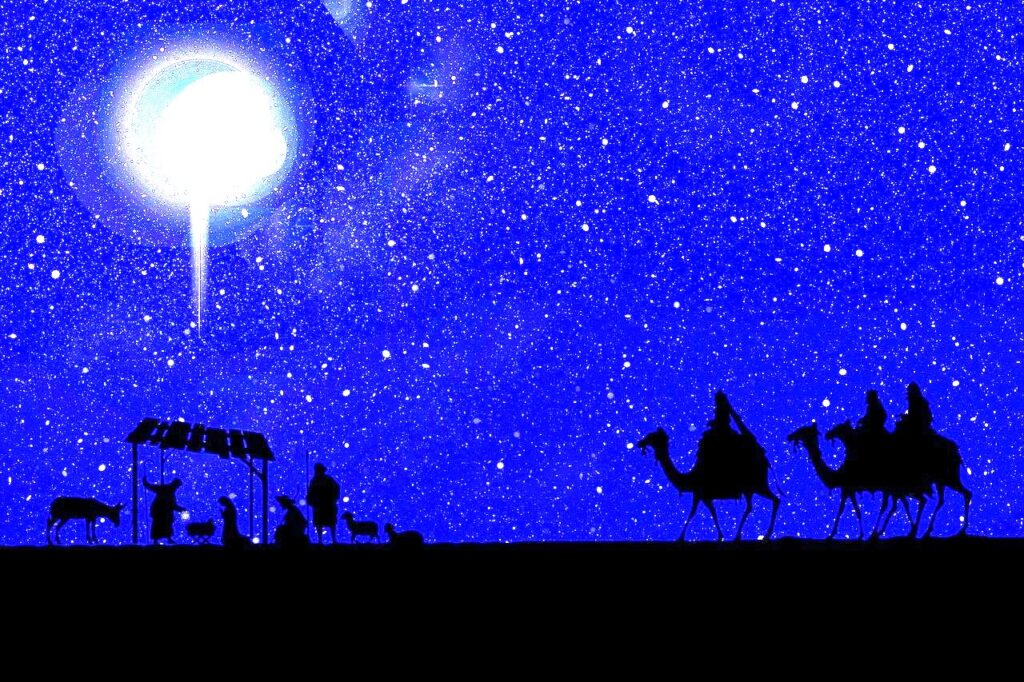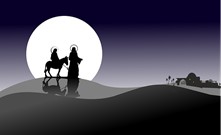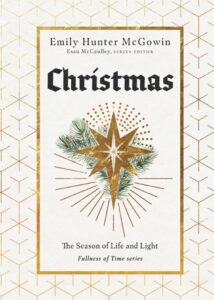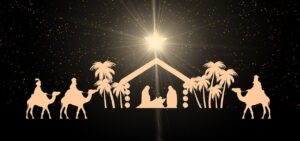Moses. Pharoah. The Red Sea. The Promised Land. And Christmas. Wait! What? How did that get in the list?
We don’t normally associate Christmas with Egypt, Passover, and manna in the wilderness, but the gospel writers did, in large ways and small.
We all know the story of how the three kings asked Herod to help them find the new king of Israel. When he realized they tricked him and didn’t come back from Bethlehem, he ordered all the baby boys in Bethlehem to be killed to be rid of any potential rival king. But Joseph had already taken Mary and Jesus to Egypt to escape Herod (Matthew 2:1-18).

Even here, Matthew links Jesus’ story to Moses’ story. Moses’ life as an infant was also threatened by the king of the land, in that case Pharoah (Exodus 1:15-16). Moses likewise finds refuge from death in Egypt—ironically, in Pharoah’s own household (Exodus 2:5-10).
But Matthew is not done linking these two figures. Years later Joseph is told in a dream that it’s safe to go back because “those who were trying to take the child’s life are dead” (Matthew 2:20).
That same turn of phrase is used about Moses. As an adult he fled to Midian because Pharoah wanted to execute Moses for murdering an Egyptian soldier (Exodus 2:15). Years later God calls Moses back to Egypt to free his people from slavery. It’s safe now, God says, because “those who wanted to kill you are dead” (Exodus 4:19).
Why link Jesus to Moses? The Exodus was God’s great act of salvation for Israel when they left Egypt to find rescue, release, and safety in the Promised Land. Matthew wants us to see that Jesus will do something very similar. He will be another Moses.
Matthew continues to link Jesus to Moses and the Exodus throughout his gospel.

- Jesus passes through the waters of baptism as Israel passed through the Red Sea (Matthew 3:13-17 and Exodus 14:29-31).
- Jesus then goes into the wilderness for forty days of fasting like Moses (Matthew 4:1-11 and Exodus 34:28).
- Jesus delivers new authoritative teaching from a mountain top as Moses provided the law from Mount Sinai (Matthew 5–7 and Exodus 19–20).
- Jesus provides the people with miracle bread as Moses announced manna from God (Matthew 14:13-21 and Exodus 16:13-36).
- And there is much more.*
The story of Moses and the Exodus gives us a deeper richer understanding of Jesus’ mission of salvation. But, Matthew tells us, Jesus is not just another Moses. He is even greater than Moses.
While Moses gave the law, Jesus fulfilled the law (Matthew 5:17). While Moses was sent to deliver Israel, Jesus came to deliver all the nations (Matthew 4:13-16; 28:18-20).
At Christmas we celebrate a miracle birth, yes. We also celebrate a new, better, more complete story of redemption out of slavery and darkness into “a great light.”
—
*See David Capes, Matthew Through Old Testament Eyes (Grand Rapids, MI: Kregel Academic, 2024); and Bryan Estelle, Echoes of Exodus (Downers Grove, IL: IVP Academic, 2018), chapters 7-8.
Image: Pixabay



 You can imagine my disappointment when I was told that Christmas trees were an adaptation of a pagan custom. Likewise, you can imagine my delight when I read recently that the “pagan custom” story was in fact a myth. As
You can imagine my disappointment when I was told that Christmas trees were an adaptation of a pagan custom. Likewise, you can imagine my delight when I read recently that the “pagan custom” story was in fact a myth. As 
 What we seldom notice, however, is that there is another Christmas story in Matthew, another version of how Jesus was born to Mary and Joseph. This overlooked account is squeezed between a list of Jesus’ ancestors and the familiar story. Here it is:
What we seldom notice, however, is that there is another Christmas story in Matthew, another version of how Jesus was born to Mary and Joseph. This overlooked account is squeezed between a list of Jesus’ ancestors and the familiar story. Here it is: Matthew’s grand, sweeping overview before the intimate portrait of Mary and Joseph is like a movie that begins with the whole universe in view. Then the camera moves faster than the speed of light through billions of galaxies to pause momentarily on the Milky Way before finding our solar system, racing past Saturn and Jupiter to Earth, then the Middle East, and zeroing in on a room in a Palestinian hovel.
Matthew’s grand, sweeping overview before the intimate portrait of Mary and Joseph is like a movie that begins with the whole universe in view. Then the camera moves faster than the speed of light through billions of galaxies to pause momentarily on the Milky Way before finding our solar system, racing past Saturn and Jupiter to Earth, then the Middle East, and zeroing in on a room in a Palestinian hovel.